Clematis in Siberia: planting and care, reproduction
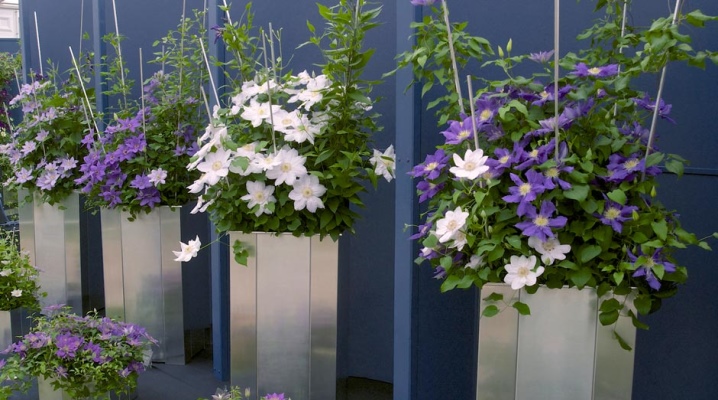
Today there are more than 300 varieties of a plant such as clematis. The only thing that unites them is that all varieties can be attributed to the buttercup family. In addition, the main feature of these plants is the variety of their shades, which allows the use of clematis in the landscape design of any site.
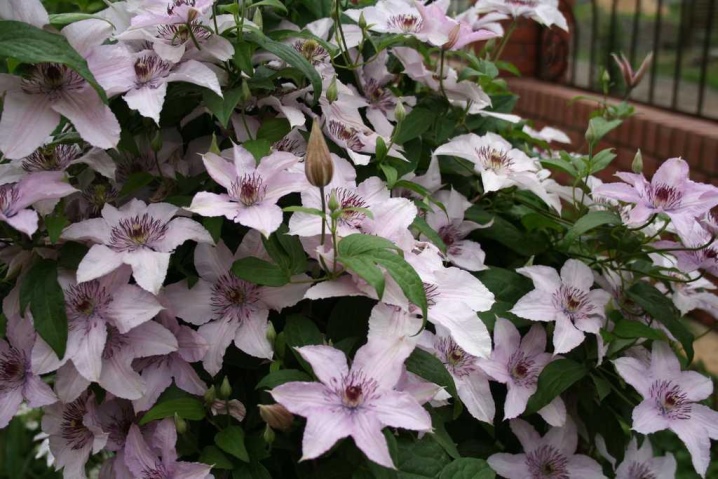
Varieties
Everyone considers the subtropics of the Northern Hemisphere to be the natural habitat of clematis. This means that they can be grown even in the regions of Siberia. They got their name from the word Klema, given to all plants that climb. In addition, they have many more names, among which you can find clematis or warthog.
Clematis can have a wide variety of shapes. These are shrubs and semi-shrubs, as well as herbaceous vines. As for the first of them, they are quite powerful stems that easily survive the winter period, even without pruning.
Semi-shrubs most often consist of two parts at once. The upper part of clematis dies off every season, and the one below always remains untouchable.
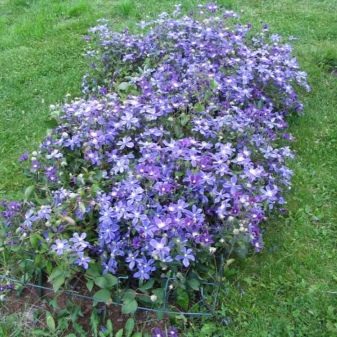

The herbaceous vines die off completely when they bloom. New vines appear only in spring.
In addition, the root system of these plants is of two types. One of them is called the pivot. She does not tolerate any transplants, so the seats are selected quite carefully. The second is called fibrous; clematis with such roots are perfect for growing in cold climates.
To grow hardened clematis in Siberia, it is necessary to choose winter-hardy varieties. That is, those that are not afraid of harsh winters, and can also bloom quickly in a very short period of summer. It is imperative to pay attention to hybrid varieties that are specially bred for cold conditions.
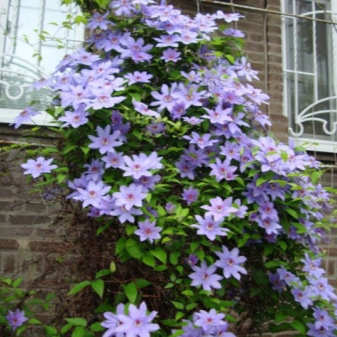
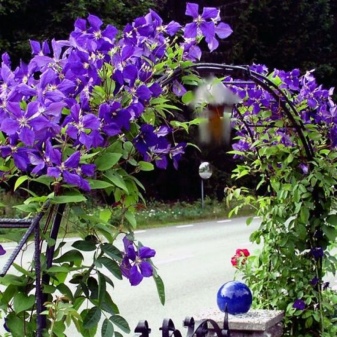
Clematis varieties can be grown in Siberia, which belong to the second and third pruning groups. Plants in the second group can bloom both on young branches and on shoots left over from last year. The only thing that will be required is to prune them from time to time.
Clematis, which belong to the third group, are herbaceous vines.... They bloom only on young shoots. However, they must be carefully covered for the time of severe frosts. It is worth considering in more detail the most common varieties of clematis, which can rightfully be called Siberian.
"Elegy"
This is a plant that can be mostly attributed to the third pruning group. Lianas of this type of clematis can grow up to 3.5 meters in Siberia. Flowering lasts almost all summer, besides, it is very beautiful and abundant. Flowers have a purple hue, their diameter is 13 centimeters.
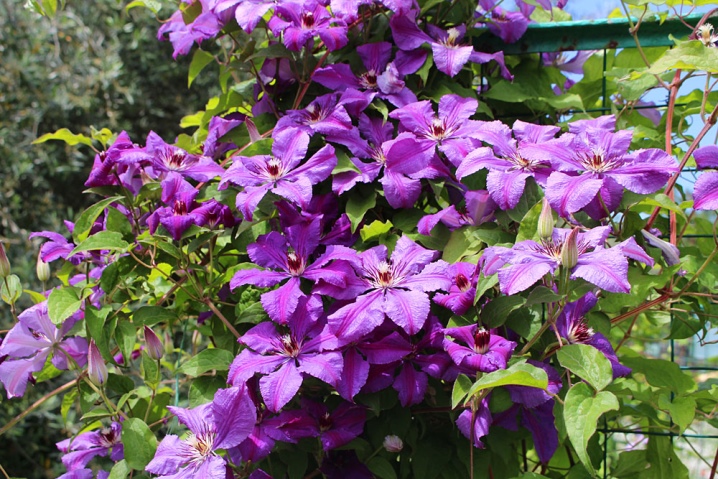
Luther Burbank
Also found in the third cropping group. This variety is quite frost-resistant. Its vines grow up to 2.5 meters, and the lilac flowers can be up to 25 centimeters in diameter. Flowering lasts from early summer and ends only in early autumn.
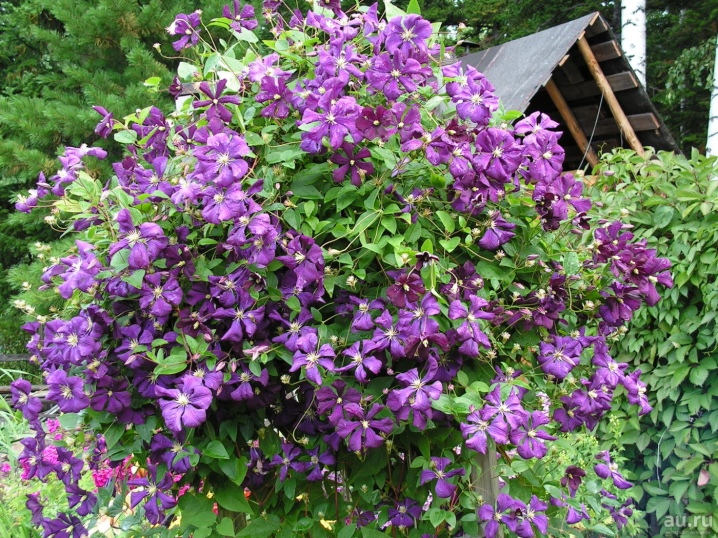
"Anastasia Anisimova"
This plant is a shrub on which more than 18 shoots are formed, the length of the vines reaches one and a half meters. Delicate blue flowers can be up to 12 centimeters in diameter. Flowering lasts all summer.
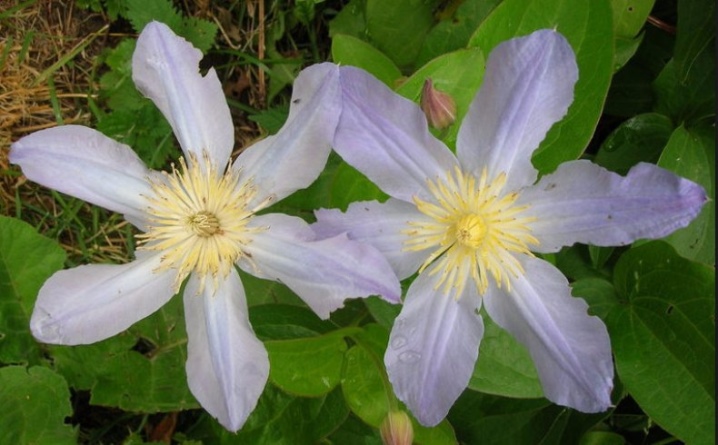
"The president"
This is a very effective clematis that must be attached to the support.The vines of an adult plant can grow up to 2.5 meters. Blue flowers can be up to 14 centimeters in diameter. This variety of clematis is suitable for decorating arches and arbors.
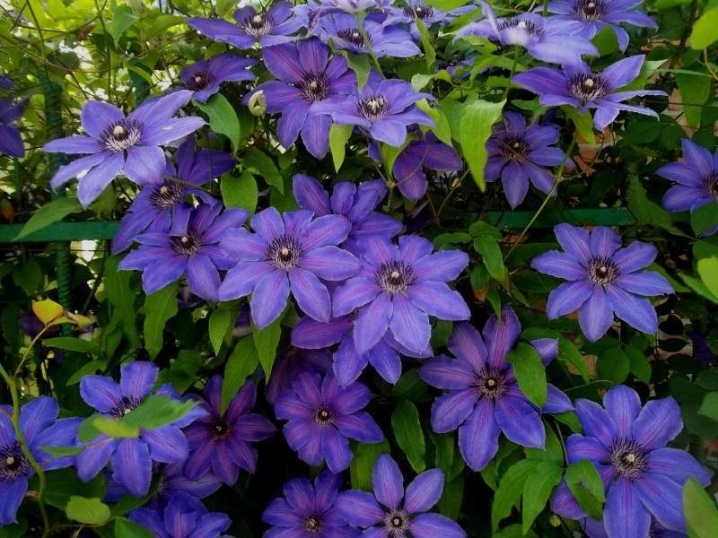
Miss Bateman
It is a shrub with vines, the length of which reaches 2.5 meters. The snow-white flowers can grow up to 14 centimeters in diameter.
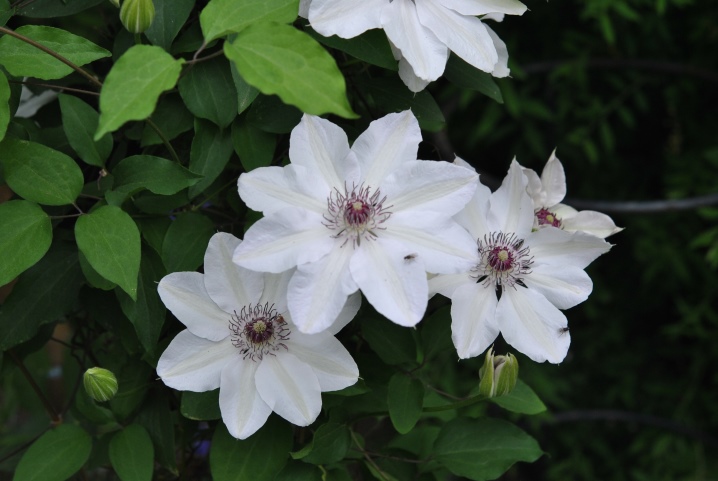
"Mrs. Cholmondeli"
This is a fairly large clematis. The length of its vines is within 3 meters. The flowers are also large; with a lilac or blue tint. They reach 17 centimeters in diameter.
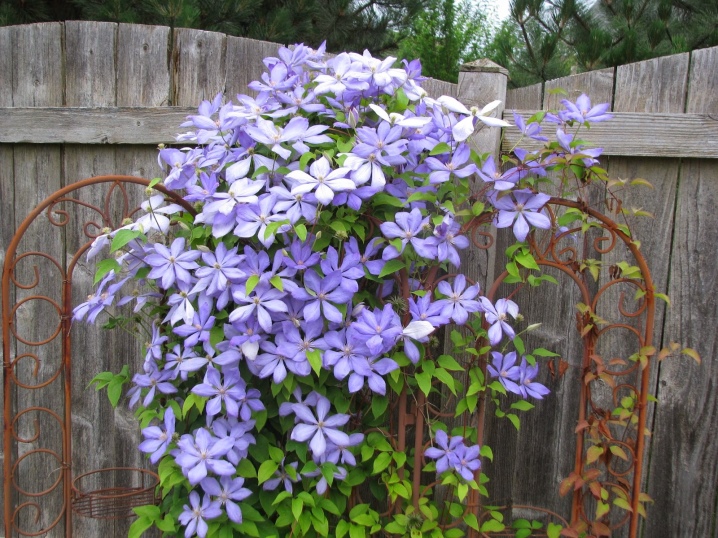
"Madame le Cultre"
Refers to frost-resistant varieties, but still needs at least partial pruning. Lianas grow up to three meters, on them you can see a large number of flowers of a snow-white shade.

"Warsaw Night"
It is a very beautiful clematis that is often used to decorate gazebos or arches. It was bred by a Polish breeder, but despite this, it has resistance to severe frosts, which makes it possible to grow it in Siberia. The flowers are bright red, almost burgundy.
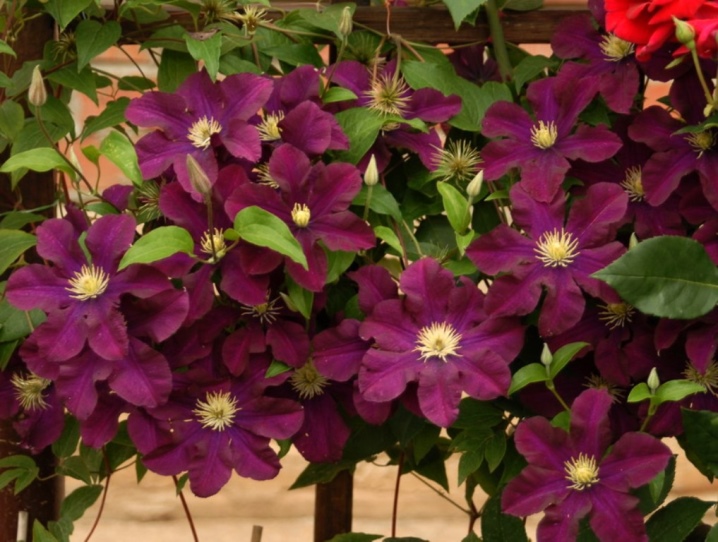
"Dr. Ruppel"
This is one of the most unpretentious varieties that grows quite quickly. Its flowers are very large with pink petals and light tips.

"The gray bird"
This clematis belongs to shrubs. The height of its vines reaches three meters, and they also have a very interesting brownish-red hue. The flowers are purple in color. If you look at the bush from the side, then it resembles a bird, which prompted the selectors to such a name.
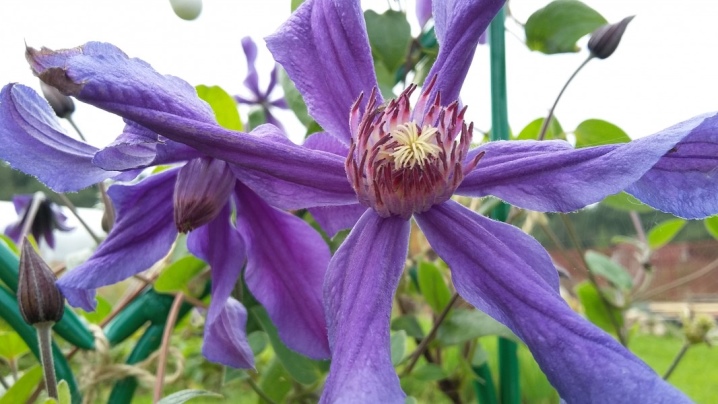
"Victoria"
This is a fairly large clematis that was bred abroad. The vines of this plant are long, up to 4 meters. On one bush, there can be more than 20 vines covered with bright lilac flowers. Perfect for growing in cold regions of Siberia.
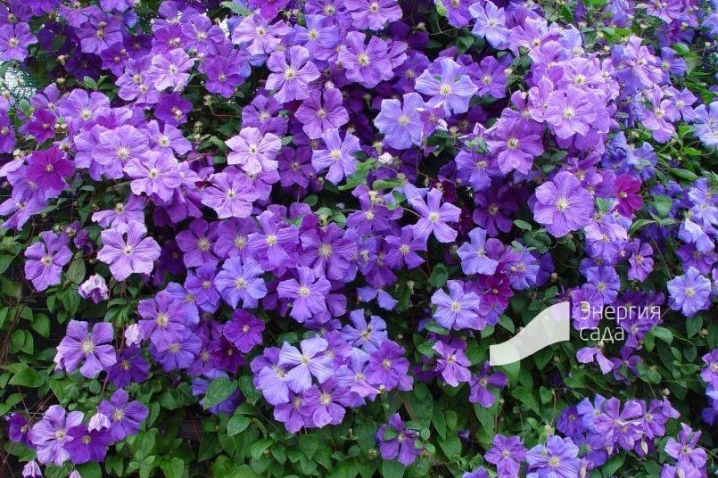
"Hope"
It differs from other clematis in its purple-pink tint of flowers. They are located on 3-meter vines. Flowering begins in early summer and ends with the onset of the first frost.
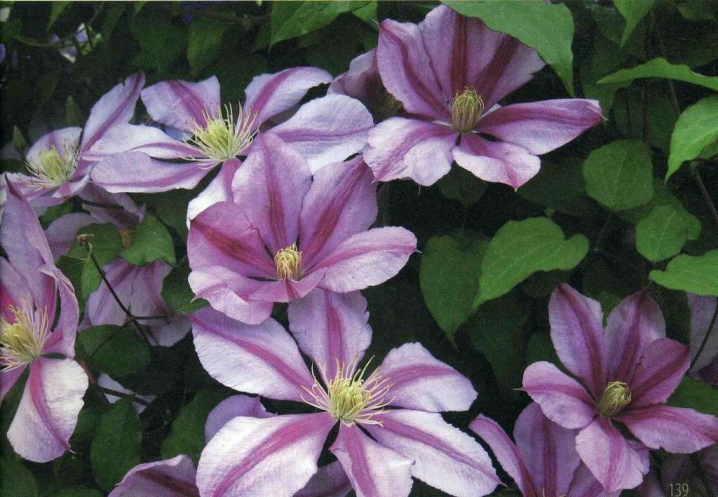
Planting and leaving
These are the two most important processes that you need to familiarize yourself with in more detail.
Landing
Having chosen for yourself the variety of clematis you like, you need to take care of planting it in the ground. This should be taken very seriously. The place should be sunny and sheltered from the winds. Indeed, where there is a lot of shade, clematis will develop too slowly or may even die. In addition, you should not plant seedlings in the lowlands, because cold air accumulates there, as well as moisture, which have a bad effect on their development.
It is imperative that you ensure that the soil is of good quality. Sandy and loamy lands are suitable for planting, moreover, they are well loosened. In the Siberian Territory, clematis have been growing for more than 10 years without a transplant.
It is best to plant young bushes in the spring - from mid-April to mid-May. At this time, all the snow has already melted, and the earth will warm up well. If the seedlings are bought in the fall, then they must be buried and sprinkled with spruce branches; it is still worth planting them in the spring.


First you need to dig a hole. Its depth should be at least 65 centimeters, and its diameter should be up to 70 centimeters. At its very bottom, it is necessary to lay out drainage from broken bricks. Its thickness should be no more than 15 centimeters.
After that you need to add 20 kilograms of humus, 10 kilograms of peat, 10 kilograms of sand, 1 glass of ash, ½ cup of bone meal and ½ cup of superphosphate... Further, in the very center of the pit, you need to install a support, and then fill it up to half with earth.
You need to place a seedling on top, spread its roots well, and then sprinkle it with the remaining earth. If there is more than one seedling, then the distance between them should be at least 1 meter. In this case, clematis will be able to receive the required amount of sun.
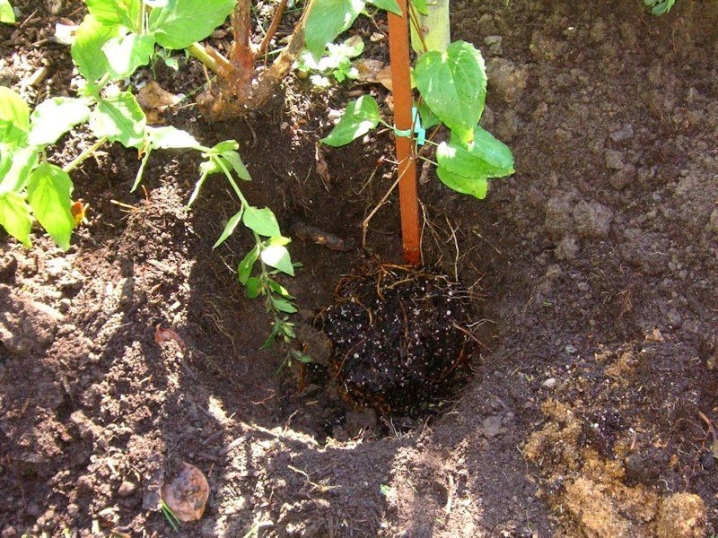
Care
In order for these beautiful plants to be able to delight everyone as long as possible, it is necessary to provide them with proper care.
- Since all clematis are moisture-loving, watering must be done quite often. After all, they very quickly build up green mass, and also form a large number of flowers. You need to water these plants once every 7 days, but you also need to make sure that the ground is not too moist. In addition, it must be remembered that you need to water abundantly so that the entire root system of clematis is moistened.
- After watering, the land around the bush must be well loosened so that moisture does not evaporate, and there are also not too many weeds.
- In addition, you need to mulch all the ground around the bush itself. As mulch, you can put ordinary sawdust or even humus. In this case, mulch after loosening will be an excellent top dressing.
- Since clematis is growing too actively, it will need a lot of fertilizer. Therefore, feeding should be done regularly. In early spring, nitrogen fertilization is best. When flowering begins, potash fertilizers will be needed, when clematis fades, you can use phosphorus fertilizers.
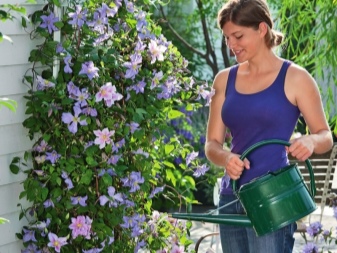
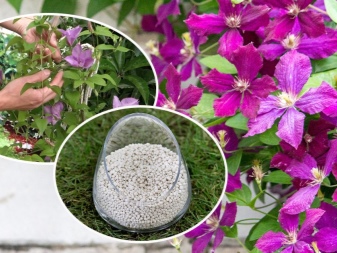
If clematis has shoots from last year, then after the plant has completely bloomed, it is necessary to remove all shoots, while leaving hemp at least 20 centimeters. And also do not forget about dry or damaged shoots. They must be removed regularly.
Preparation for wintering
Although clematis winter well, the plant still needs to be covered during frosts. You can use peat or spruce branches for this, and cover it with fallen snow on top. In addition, you can additionally cover the bush with a shield made of wooden boards or ordinary roofing material. In the spring, all this will need to be removed, and the ground around the bush should be well loosened.
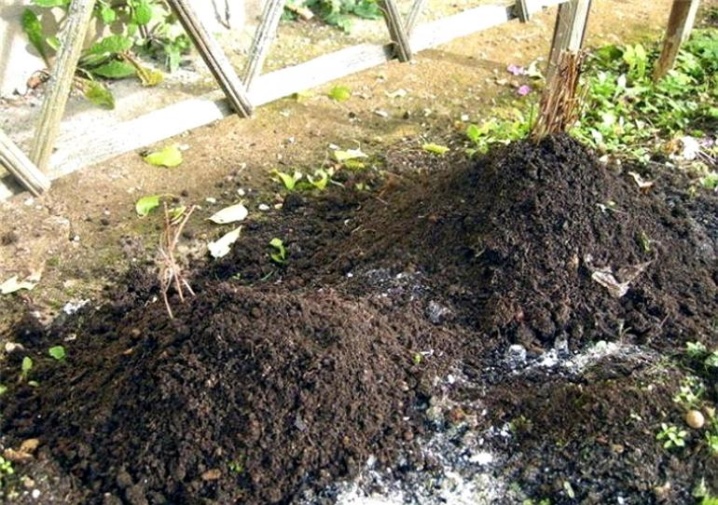
Reproduction
Such a process as the cultivation of this culture is possible even in Siberia. This can be done in different ways, for example, cuttings or layering, or simply dividing the bush. But experts do not recommend using seeds for reproduction in cold conditions. After all, all grown seedlings are wild and frost-resistant.
Using layering
One of the safest breeding options is this method.... Indeed, with its help, you can simultaneously get many young seedlings of the clematis variety you like. Besides it can be used both in autumn and spring.
To obtain seedlings, it is necessary to dig a not too deep groove near an already mature bush. You need to put the longest and healthiest shoots in it. You can fix them with staples, and then carefully sprinkle them with a layer of earth, while leaving the tops on the ground.
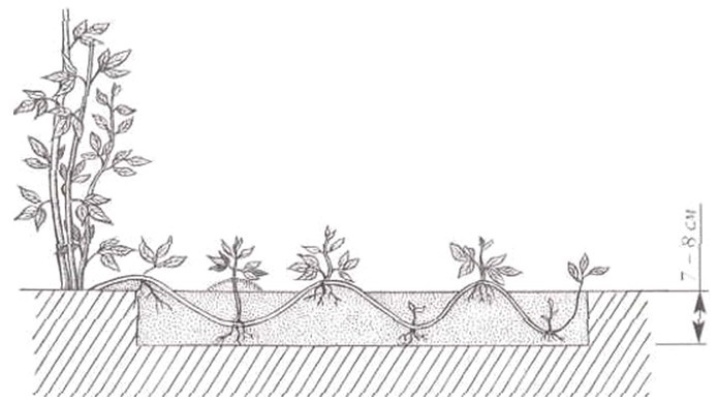
The longer the shoots are, the more layering you will get. Water them regularly. After a year, when the layers are well rooted, they can be detached and planted in a place chosen in advance.
Using cuttings
Harvesting of cuttings should be done at a time when the buds begin to bloom. This time falls at the beginning of summer. It is necessary to choose cuttings in the very middle of the bush. Their length can be within 10 centimeters. Each must have at least one bud, as well as 2 leaves.
After cutting, they must be placed in a container with a growth stimulator. This will greatly speed up the root growth process. Then they must be planted in a substrate of sand and peat. They need to be watered daily, besides it is necessary to maintain the temperature within +24 degrees Celsius. After 30 days, roots should appear, which means that the seedlings are completely ready for planting.

Dividing the bush
This type of reproduction is possible only when the plant is more than 3-5 years old. To make a section of a bush, it must be completely dug up, and then several parts must be separated. Each of them should have roots as well as good shoots. After that, they can be planted in pre-prepared pits.
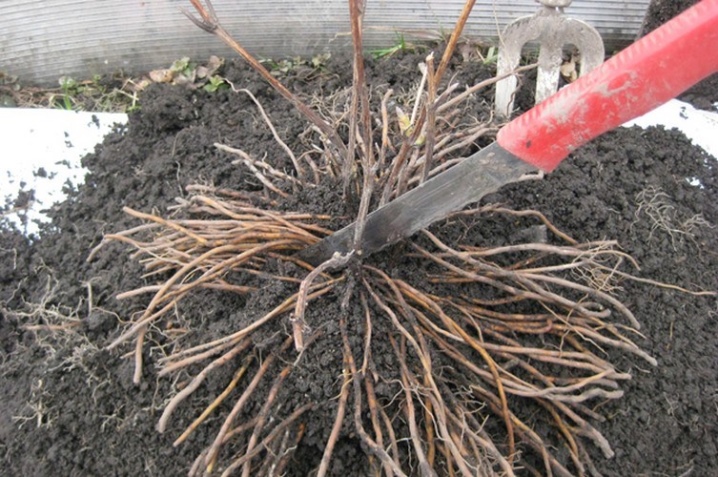
Diseases and pests
Clematis are quite protected plants, therefore they are practically not susceptible to diseases.However, the most common among them is considered a disease such as wilt. In case of infection, the leaves wither, turn black, and then completely fall off. To fight you can use Bordeaux mixture, or sprinkle with "Fundazol".
As for pests, nematodes, spider mites, and the well-known aphid can also pose a threat to plants. You can get rid of the last two with the help of special drugs that are sold in special stores. But if it is a nematode, then the plant must be completely burned.
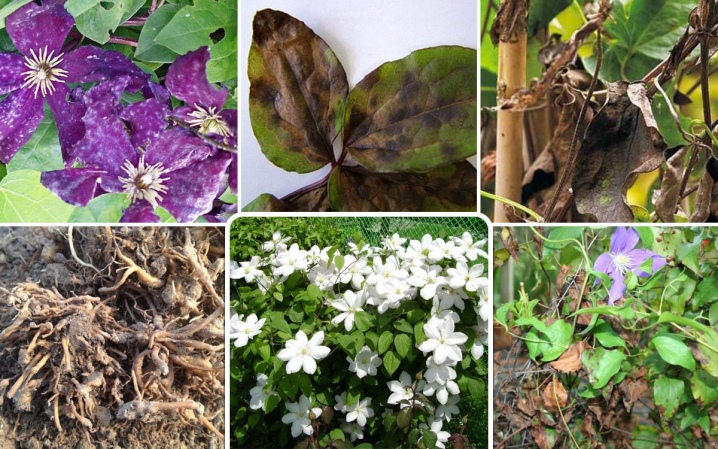
Possible difficulties in growing
It will be difficult to grow any plant in the Siberian region under natural conditions. After all, winters are quite cold here, and not every clematis bush can take root in such conditions. The main thing is to correctly approach the choice of clematis varieties, and also do not forget to cover the plant for a period of severe frosts, otherwise fragile clematis may even die.
Examples in landscape design
These climbing plants are perfect for decorating fences, gazebos and even summer terraces.

In the garden
Clematis of different varieties look very beautiful together. With their help, you can arrange a beautiful place for tea drinking in the garden. In the very middle, you can put a bench and a small portable table.
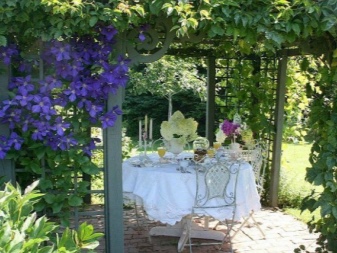
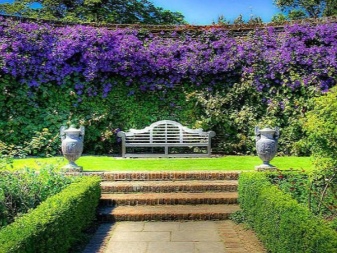
Near the house
If you plant clematis at the very corner of the house, then in a few years it will easily wrap around all the walls. It will look good almost all year round.
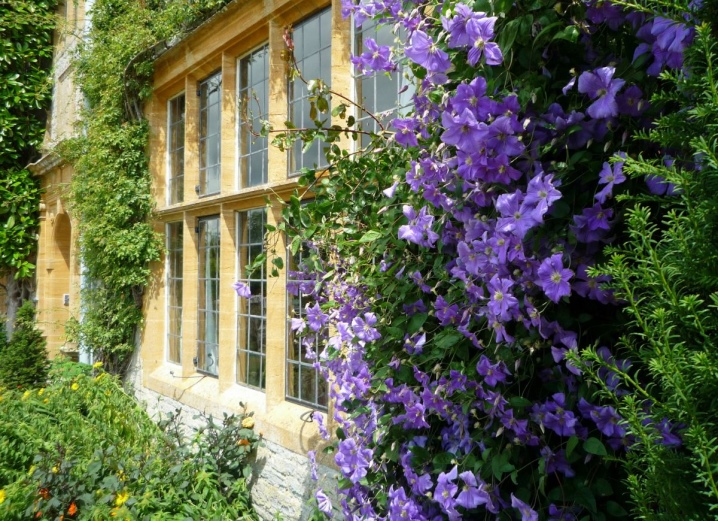
Summing up, we can say that plants such as clematis are suitable not only for warm regions of the country, but also for those where severe frosts are rampant. But for this you need to provide them with proper care.
See below for the features of caring for clematis in Siberia.







































































































The comment was sent successfully.